Ninja Scroll
8.2 /10 1 Votes
86% Rotten Tomatoes Genre Animation, Action, Adventure | 7.9/10 IMDb Director Yoshiaki Kawajiri Duration | |||||||||||||||||||||||||||||||||
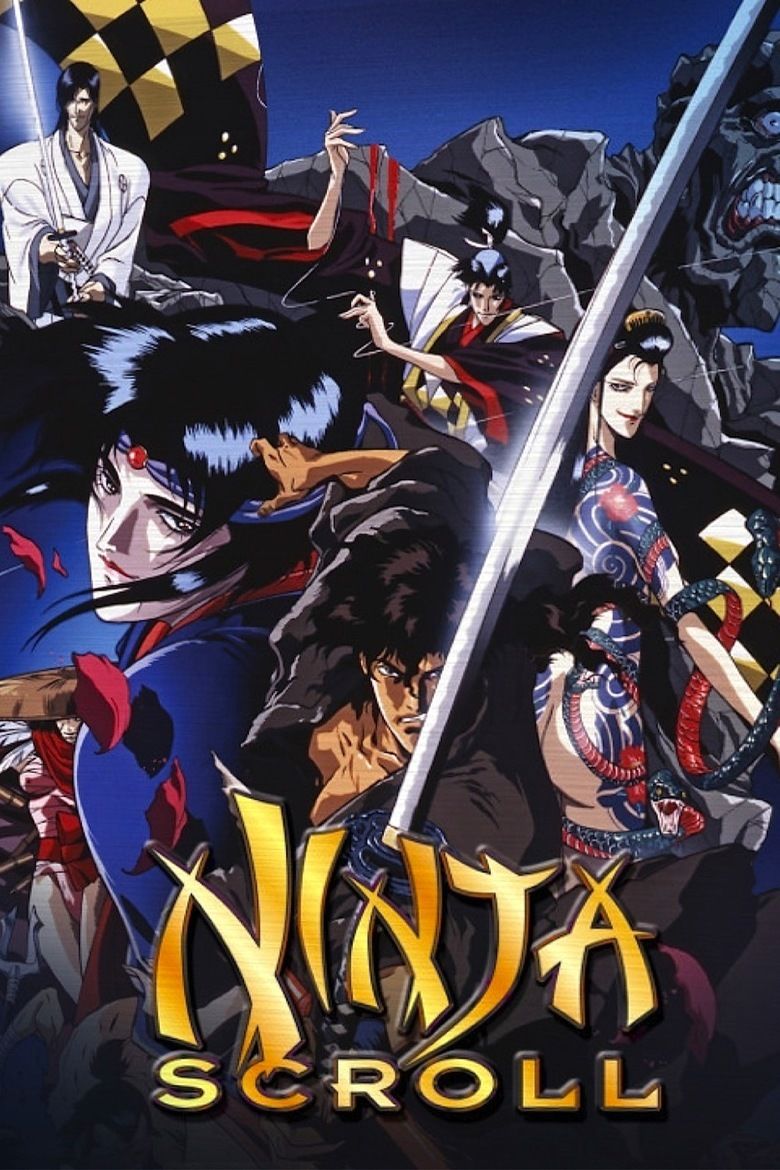 | ||||||||||||||||||||||||||||||||||
Release date June 5, 1993 (1993-06-05) Cast Kôichi Yamadera (Jubei Kibagami), (Kagero), (Dakuan), Daisuke G?ri (Genma Himuro), (Yurimaru), Shûichirô Moriyama (Sakaki Hyobu)Similar movies The Last Samurai , 47 Ronin , Seven Samurai , Kagemusha , Rashomon , Teenage Mutant Ninja Turtles III Tagline Feudal Japan - A Time of Danger, Intrigue and Deception... | ||||||||||||||||||||||||||||||||||
Ninja scroll trailer
Ninja Scroll (獣兵衛忍風帖, Jūbē Ninpūchō, lit. "Jubei the Wind Ninja") is a 1993 Japanese animated film written and directed by Yoshiaki Kawajiri, starring the voices of Kōichi Yamadera, Emi Shinohara, Takeshi Aono, Daisuke Gōri, Toshihiko Seki and Shūichirō Moriyama. The film was a co-production between JVC, Toho, Movic and Animate, with Madhouse serving as the animation studio. Ninja Scroll was theatrically released in Japan on June 5, 1993, and received an English-dubbed release in Western countries through Manga Entertainment in 1995.
Contents
- Ninja scroll trailer
- Plot
- Characters
- The Eight Devils of Kimon
- Release
- Soundtrack
- Track listing
- Reception
- Anime series
- Sequel
- Comics
- Live action adaptation
- References
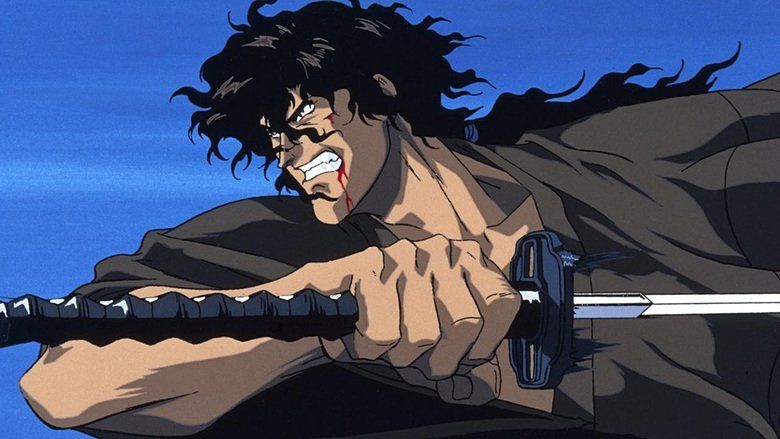
The film takes place in feudal Japan and follows Jubei Kibagami, a mercenary swordsman who battles the Eight Devils of Kimon, a team of ninjas with supernatural powers who are intent on overthrowing the Tokugawa shogunate. During his quest, he is aided by Dakuan, an elderly but crafty government spy, and Kagero, a Koga kunoichi whose body is infused with poisonous toxins. Ninja Scroll's story and style was influenced by the works of novelist Futaro Yamada and Western spy fiction, with Jubei's character being loosely inspired by the historical figure Yagyū Jūbei Mitsuyoshi.
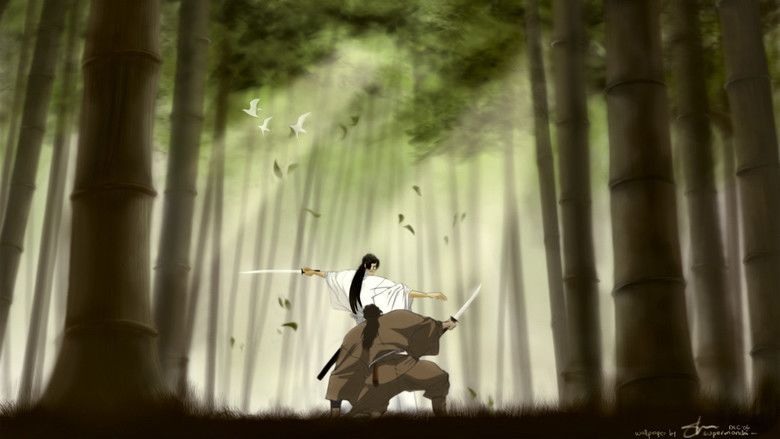
Widely praised for its animation and action scenes, Ninja Scroll is frequently regarded as one of the most influential anime films ever made; alongside Akira and Ghost in the Shell, it was responsible for increasing the popularity of adult-oriented anime outside of Japan. The film has been cited by The Wachowskis as an influence on The Matrix franchise, and resulted in Kawajiri later contributing to two segments of the anthology film The Animatrix.
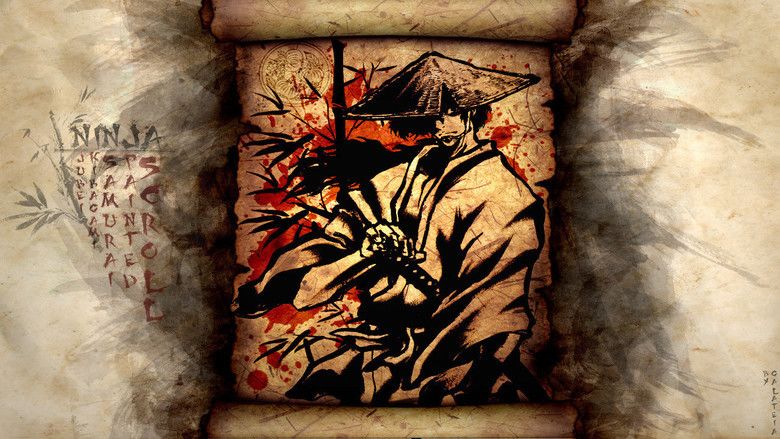
A televised stand-alone sequel, Ninja Scroll: The Series, was aired in Japan in 2003.
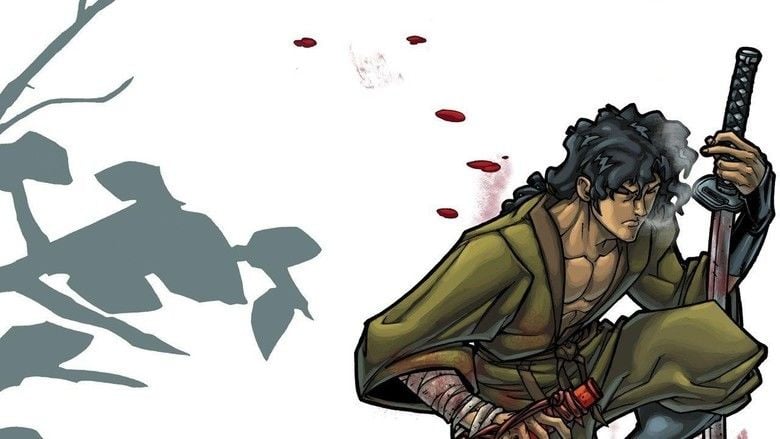
Plot
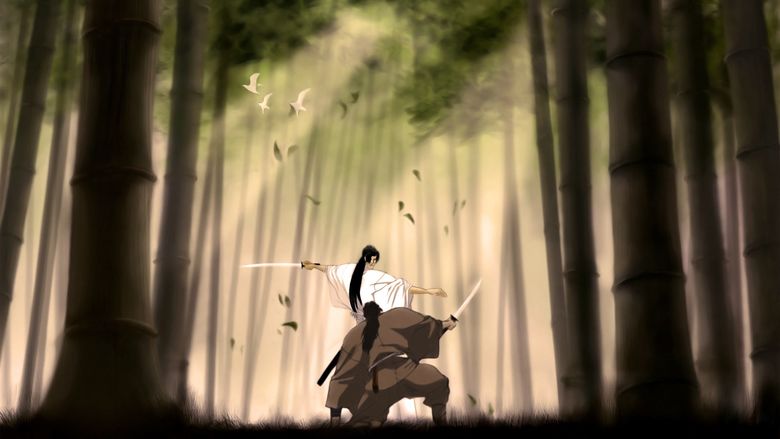
In Edo period-Japan, the Yamashiro clan mines gold in secret, and sends a shipment to the Toyotomi Shogun of the Dark as payment for his protection. The Shogun of the Dark intends to use the gold to buy advanced Spanish weaponry and overthrow the current government, the Tokugawa Shogunate. The ship runs aground onto Mochizuki territory in a storm, and the Eight Devils of Kimon, a ninja team with supernatural powers in the employ of the Yamashiro, kill the people of the nearby village of Shimoda to keep the gold shipment a secret.
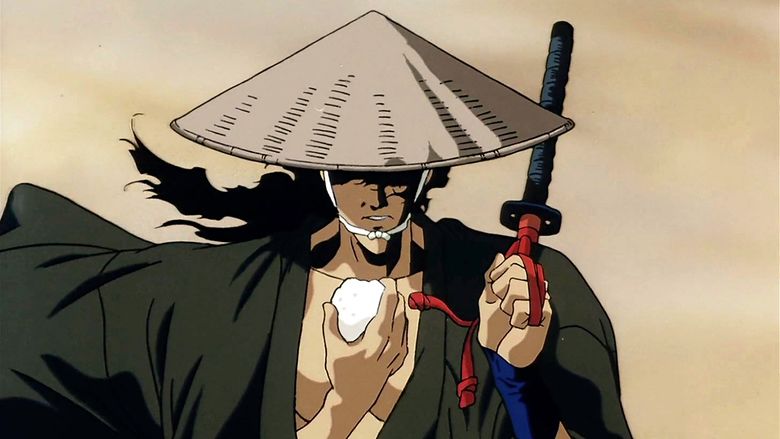
While investigating the deaths, a Mochizuki Koga ninja team is massacred by the Devils. The sole survivor, Kagero, is captured by a Devil, Tessai, who molests her. She is rescued by Jubei Kibagami, a mercenary ex-Yamashiro ninja, who fights and eventually kills Tessai. Dakuan, a Tokugawa spy, blackmails Jubei into helping him kill the remaining Devils. To ensure his compliance, Dakuan stabs Jubei with a poisoned shuriken, and promises to give him an antidote once the mission is complete. Jubei learns from Dakuan that the leader of the Devils is Himuro Gemma, the former Yamashiro ninja leader, who had ordered his team’s members to kill each other to cover up the location of the goldmine five years earlier. Jubei, who had been forced to kill his comrades to survive, decapitated Gemma in revenge; Gemma survived due to his immortality. Jubei is attacked by another Devil, Benisato, but he is saved by Kagero; before she can be questioned, Benisato is killed from afar by Yumimaru, Gemma's right-hand man, for failing her mission. Kagero agrees to work alongside Jubei and Dakuan, who informs Jubei that her body is infused with such deadly toxins that anyone who kisses or sleeps with her dies, which was why Jubei could kill Tessai.
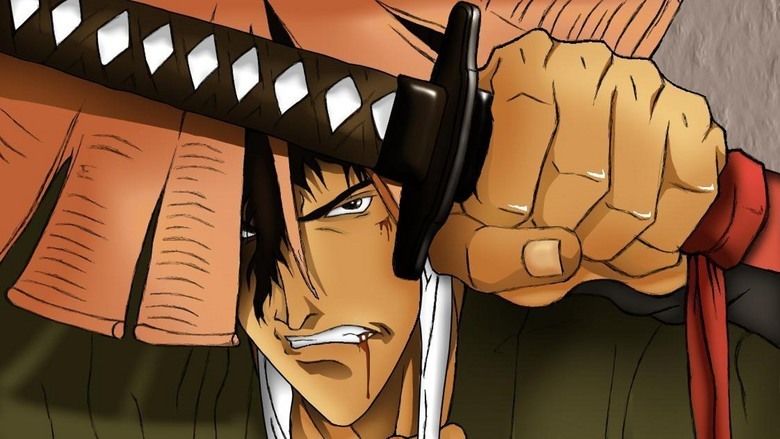
The trio arrive in Shimoda, where they discover that the villagers died due to their water supply being poisoned, making it appear that they were killed by a plague. Jubei and Kagero fend attacks from three of the Devils – Mushizo, Zakuro and Utsutsu Mujuro; Jubei succeeds in killing Mushizo and Utsutsu. After finding the beached ship, Kagero deduces that the gold has been taken to Kashima Harbour, where it will be transported to the Shogun of the Dark in another ship.
Jubei, Kagero and Dakuan arrive at Kashima, which has been evacuated due to the townspeople’s fear of the plague. While Jubei battles another Devil, Shijima, Kagero sends a message to Sakaki Hyobu, the Mochizuki chamberlain, to bring his army to the harbour. She also learns from Dakuan that Jubei’s poisoning will only be cured if he copulates with her – the poisons in her body will counteract his. Kagero is captured by Shijima, and Jubei kills him, rescuing her once more. Kagero asks Jubei to sleep with her to cure himself. He considers doing so, but upon the arrival of the Shogun of the Dark's envoy in a ship, he leaves to prevent the gold reaching its destination.
Kagero arrives to meet Sakaki, but he stabs her, revealing himself to be Gemma in disguise. Enraged, Jubei fights through waves of ninjas, but is nearly killed by Yumimaru. A gunpowder-rigged rat, left as a trap by Zakuro for Yumimaru for rejecting her advances, kills him, allowing Jubei to escape. He finds Kagero; mortally wounded, she admits her love for him and they kiss, curing Jubei’s poisoning. Before dying, Kagero gives Jubei her headband.
Jubei and Dakuan board the departing ship. On-board, Gemma reveals his true intentions to the Shogun of the Dark’s envoy (who he kills) – he intends to use the gold to raise a ninja army to terrorize Japan, rather than serve as an ally to the Toyotomi. During an altercation with Zakuro, Jubei and Dakuan set the ship ablaze. As Jubei and Gemma engage in a brutal fight, the gold becomes molten and engulfs Gemma, who sinks to the bottom of the sea. Afterwards, Dakuan thanks Jubei, and expresses admiration for his and Kagero’s humanity. Jubei resumes his vagabond lifestyle, with Kagero’s headband tied around his sword’s hilt.
Characters
The Eight Devils of Kimon
The Eight Devils of Kimon (鬼門八人衆, Kimon Hachinin-shū, "Eight People of the Demon Gate") are eight demonic ninjas with supernatural powers, seven of which were gathered under Himuro Gemma's leadership after he reincarnated himself from Jubei's ambush, and appear to serve under the Shogun of the Dark.
Release
The film was licensed by Manga Entertainment in Australia and North America until 2012 while its UK subsidiary kept the license and released the movie in a Blu-ray steelbook format in October 2012. The film has since been re-licensed in North America to Sentai Filmworks who re-released the film on DVD and Blu-ray in December 2012.
In 1995, the BBFC cut the UK version by approximately 52 seconds, removing the sexual assault scene and images of throwing stars. These cuts were waived for the 2004 10th Anniversary release. Ninja Scroll was released in Australia by Manga UK in 1995 uncut with the MA15+ classification. In 1997 after it was screened on SBS, former Attorney-General Philip Ruddock controversially appealed the film's original classification and successfully had the classification upgraded to R18+ with no cuts. In January 1998 it broadcast twice on midnights on the new Teletoon station in Canada along with the Macross Plus trilogy.
In 2000 when Manga and Madman Entertainment released Ninja Scroll on DVD, Madman mistakenly used the UK cut of the film instead of using the uncut Australian version. This was rectified in 2004 when Manga Entertainment released the 10th Anniversary Special Edition of Ninja Scroll into western countries, and both Australia and the UK received Ninja Scroll uncut and remastered from a PAL VHS source. In Canada the film was given an 18A rating, while it was released Unrated in the United States. The film was released on Blu-ray in Japan on May 23, 2012.
Soundtrack
The film's score was composed by Kaoru Wada. In the United States, the soundtrack was originally released on CD in 2003 by ADV Music under licence from Toho with the title Jubei Ninpucho Ninja Scroll (Original Motion Picture Soundtrack). Following ADV's closure, Milan Records re-released the album in 2015 on CD and digital music formats. In 2016, Milan also released the album on LP with a slightly different track listing and cover art by Godzilla artist Yuji Kaida; this release was limited to 500 copies.
Track listing
All tracks written by Kaoru Wada except "To Those Who Face The Wind" and "Somewhere, Faraway, Everyone Is Listening To A Ballad", by Ryouhei Yamanashi (music) and Sho Jitsukawa (lyrics).
CD/digital release, 2003/2015:
LP release, 2016:
Reception
Ninja Scroll won the Citizen's Award at the 1993 Yubari International Fantastic Film Festival. On review aggregator website Rotten Tomatoes, the film has a rating of 92%, based on 12 reviews, with an average rating of 7.8/10.
During the 1990s, Ninja Scroll was among the most popular anime movies outside Japan, along with such movies as Akira and Ghost in the Shell. The North American video release of Ninja Scroll had sold more than 70,000 copies by May 1996, becoming Manga Entertainment's best-selling title at the time.
Theron from Anime News Network exclaims that the "action scenes sizzle with energy and powerful maneuvers unencumbered by tiresome dramatics" and describe the plot as "mostly exists just to set up conflicts between the protagonists and the Devils of Kimon and allow various characters to show off their colorful ninja techniques". He concluded that "Ninja Scroll's story is too thin for it to ever legitimately be considered one of the all-time great anime movies" but considers it to be a classic.
Anime series
A Japanese animated television series named Ninja Scroll: The Series aired in Japan in 2003 and ran for 13 episodes. The series is a stand-alone sequel to the film; however, many references suggest that it is indeed a continuation. In the series, Jubei gets caught in the middle of a battle between the Kimon clan and the Hiruko clan. He meets up with the Light Maiden Shigure, a young lady whose village was destroyed by the Kimon clan and whom Jubei was charged with delivering a Dragon Stone to. The duo are joined by Tsubute (a young thief) and Dakuan (Tokugawa shogunate spy), and together they try to find out why both the Kimon and the Hiruko clan are after her and why the Dragon Stone she carries is so important to them. The show was directed by Tatsuo Sato (Martian Successor Nadesico), with character design done by Takahiro Yoshimatsu (Trigun).
Sequel
An official sequel, Jūbē Ninpūchō 2, is classed as in production with no specific release date. The film is scheduled to be written and directed by Yoshiaki Kawajiri, and will most likely be released in the west as Ninja Scroll 2.
In North America, the Ninja Resurrection anime films were marketed as sequels to Ninja Scroll, but were actually created by a separate animation studio. The only similarity they both share is a lead character named Jubei. The Jubei in Ninja Resurrection was Yagyū Jūbei while Ninja Scroll featured Jubei Kibagami.
Comics
In September 2006, WildStorm launched a 12-issue Ninja Scroll comic book series written by J. Torres, which follows the further adventures of Jubei.
Live-action adaptation
In October 2008, Warner Bros. began development of a live-action remake of the anime. The production companies Appian Way, Madhouse Productions, and Jungo Maruta are involved in development. Screenwriter Alex Tse, co-writer of the movie adaptation of Alan Moore's Watchmen, was hired to write the adapted screenplay. In 2008, Leonardo DiCaprio was reported to be a producer. He later considered casting the Japanese boy band SMAP as the main leads for Ninja Scroll.
References
Ninja Scroll WikipediaNinja Scroll IMDbNinja Scroll Rotten TomatoesNinja Scroll themoviedb.org
